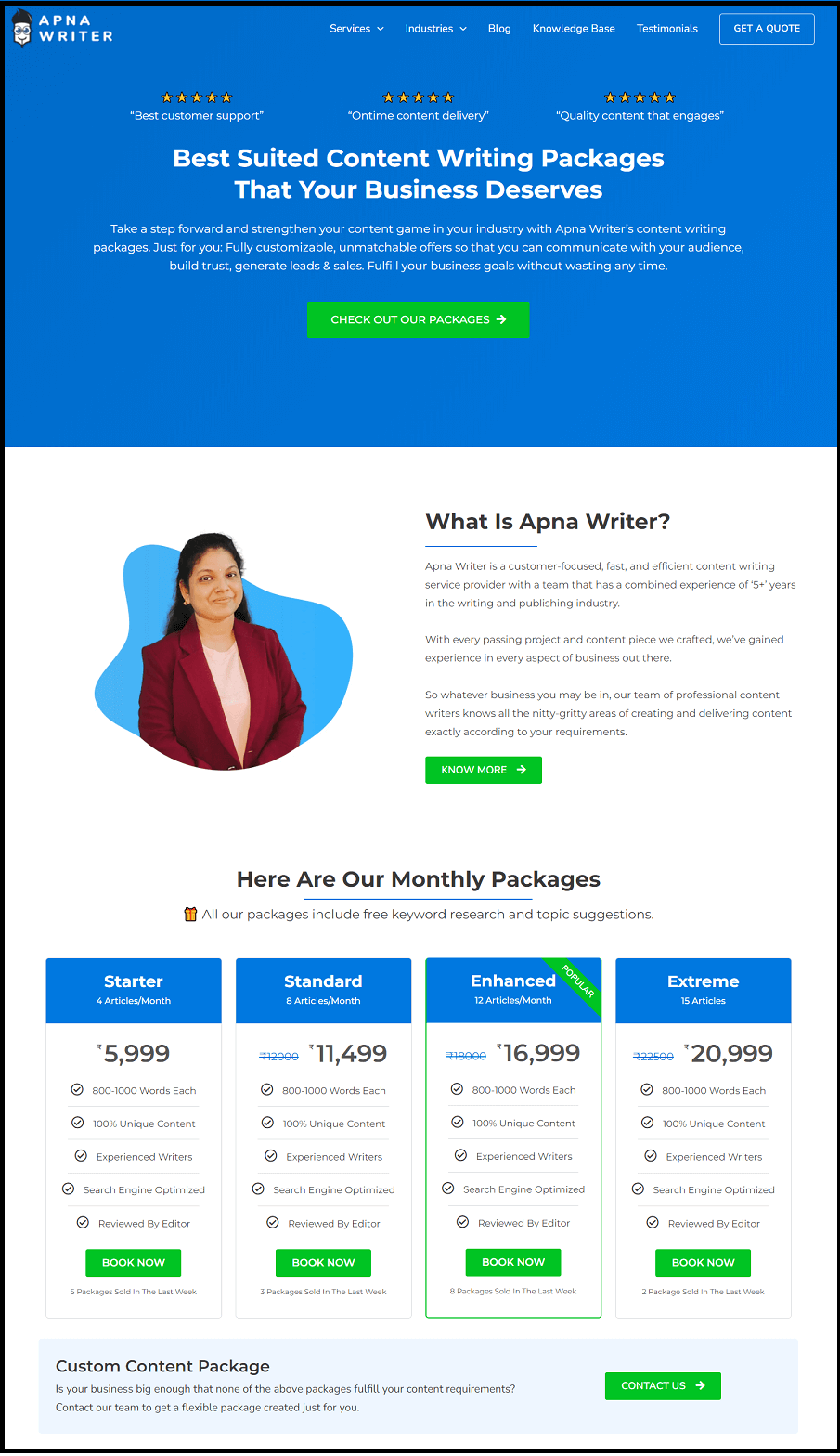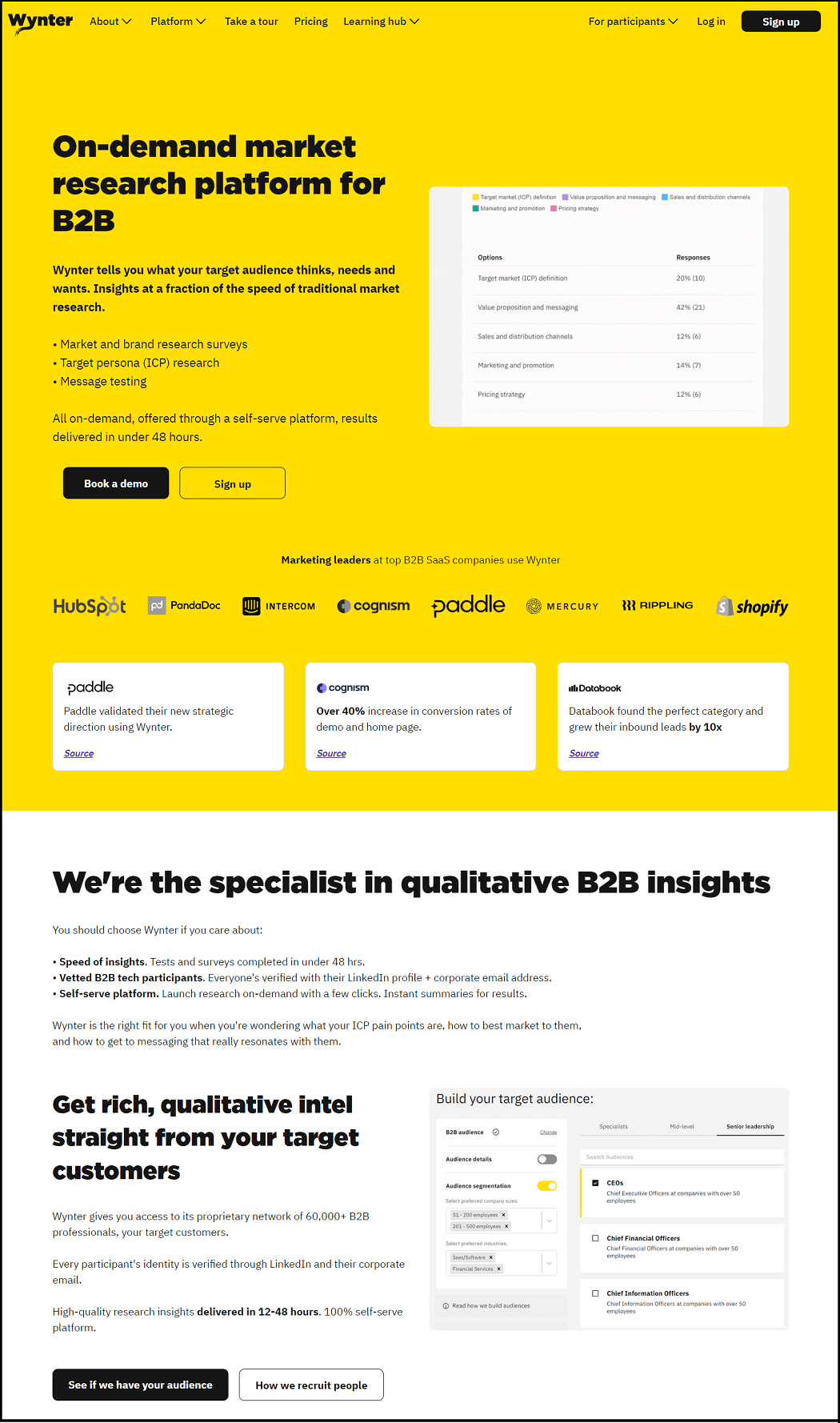Landing page copywriting is a specialized form of writing aimed at creating high-converting web pages that focus on a single offer or goal. These pages are designed to capture leads, promote a product, or encourage a specific action from visitors.
Here’s an overview of what landing page copywriting entails, along with examples, key elements, and the writing process.
What is landing page copywriting?
Landing page copywriting involves crafting persuasive and engaging text that encourages visitors to take a specific action, such as signing up for a newsletter, downloading a resource, or making a purchase. Unlike traditional website content that provides comprehensive information about a business, landing pages are focused and streamlined, often featuring a single call to action (CTA) that directs users toward conversion.
Landing page copywriting examples
1. Lead Generation Page: A page offering a free eBook in exchange for an email address. The copy emphasizes the value of the eBook and how it addresses the reader’s pain points.
An example from ApnaWriter, a copywriting agency in India:

2. Product Sales Page: A landing page for a new gadget that highlights its unique features and includes customer testimonials to build trust.
Here’s an example from Wynter:

Key elements of high conversion landing page copywriting
1. Compelling Headline
The headline is arguably the most critical element of a landing page. It should be benefit-oriented and directly address the visitor’s needs or interests. A strong headline captures attention and sets the tone for the rest of the page. It should also align with the messaging from the ad that brought the visitor to the page to ensure consistency and relevance.
2. Clear Subheadline
Following the headline, a subheadline can provide additional context or reinforce the main message. This element helps clarify the offer and can entice visitors to read further.
3. Focused Body Copy
The body copy must be concise and relevant, focusing on the benefits of the offer rather than just its features. Use simple language and bullet points to highlight key information, making it easy for visitors to skim and understand the value proposition quickly.
4. Single Call to Action (CTA)
A high-converting landing page should have one clear and prominent CTA. This could be a button that says “Sign Up Now,” “Get Started,” or “Download Free eBook.” The CTA should stand out visually and be placed strategically, ideally above the fold and repeated at the bottom of the page for longer content.
5. Visual Elements
Incorporating relevant images or videos can enhance the message and draw attention. Visuals should support the text and help convey the offer’s benefits without distracting from the main goal.
6. Social Proof
Testimonials, reviews, or logos of reputable clients can significantly enhance credibility and trust. Including social proof reassures visitors that others have benefited from the offer, making them more likely to convert.
Here’s an example where we added third-party student review ratings for our Pune digital marketing course:
7. Minimal Distractions
A successful landing page should eliminate unnecessary navigational links and distractions. This helps maintain focus on the desired action and prevents visitors from leaving the page without converting.
8. Prominent Form or Checkout Option
If the goal is to collect information or facilitate a purchase, the form or checkout button must be easily accessible and visually prominent. The fewer fields required, the better, as this reduces friction and encourages completion.
9. Consistent Branding
The landing page should maintain the same look and feel as the overall brand, using consistent colours, fonts, and styles. This reinforces brand recognition and trust.
Here’s a 6-step copywriting process
- Define Your Goal: Establish the primary objective of the landing page, whether it’s lead generation, product sales, or event registration. This focus will guide the content creation process.
- Understand Your Audience: Conduct research to identify the target audience’s needs, pain points, and motivations. This information is crucial for crafting relatable and persuasive copy.
- Craft the Value Proposition: Clearly articulate what the offer is, who it’s for, and how it benefits the audience. This should be prominently featured in the headline and body copy.
- Write Compelling Copy: Use persuasive language that resonates with the audience. Highlight benefits over features and create a sense of urgency or exclusivity when appropriate.
- Incorporate Visuals: Select images or videos that complement the text and enhance the overall appeal of the landing page.
- Test and Optimize: After launching the landing page, monitor its performance through analytics. A/B testing different elements (headlines, CTAs, body copy) can help identify what works best for improving conversions
